Background
Over the last decade, many local and state jurisdictions in the United States have purchased and stockpiled radiation detection equipment as part of their preparedness efforts for responding to radiation emergencies. Many of these jurisdictions do not require this instrumentation for their routine activities. These instruments are purchased and maintained solely for use in training or actual response to nuclear or radiological emergencies. The cost of calibration of these instruments by commercial vendors is not insignificant, and many of these jurisdictions do not have that recurring cost in their budgets. There are no recommendation or guidelines addressing this national issue.
The state of Georgia provides a case in point. Health districts in Georgia purchased hundreds of hand-held instrumentation and portal monitors several years ago serving as a resource throughout the entire state. However, there is a risk the districts may need to give up the instruments because they cannot afford the cost of periodic calibrations. These users requested the NCRP to provide some guidance on how to affordably check their instruments’ performance and keep their capability without the need to perform frequent calibrations. This is, in fact, a problem faced by many other local and state jurisdictions in the country, and they would all benefit from such guidance.
Currently, state emergency planning coordinators reference Federal Emergency Management Agency (FEMA) guidance for portable instruments used for radiological emergency response to nuclear power plant accidents (FEMA-REP-22), which recommends an annual calibration interval or an interval recommended by the manufacturer. In practice, funding availability typically allows for 2 to 3 y calibration intervals. Instruments such as survey meters (e.g., gamma detectors with or without alpha/beta probes), personal radiation detectors (PRDs), radioisotope identification devices (RIIDs), backpack-type radiation detectors (BRDs), personal emergency radiation detectors (PERDs), and radiation portal monitors (RPMs) are being stockpiled by states and require periodic calibration. One way to reduce the frequency of those calibrations can be accomplished by periodic functionality tests. Currently some manufacturers sell test adaptors, equipped with a radioactive source, to verify their specific instrument’s functionality. For those that do not, a procedure such as the following could be used:
- The instrument owner should obtain a calibrated source of a radionuclide that does not require an U.S. Nuclear Regulatory Commission (NRC) license and/or state license. This can be accomplished by using a source such as Th-232, that is a naturally occurring radionuclide, or a source with an activity that is below the license requirements.
- All the instruments used by the users shall be exposed to this radioactive source in a well-defined geometry. The source to detector distance and detector location relative to the source should be reproducible with time.
- The initial instrument response to this source(s) shall be recorded right after the instruments are known to be calibrated and working as expected.
- The response of the instrument to the source shall be measured and recorded periodically so that the instrument performance can be tracked with time.
This NCRP statement would recommend an acceptance range for the instrument performance. This performance shall be tracked periodically (e.g., once a year or at manufacturer recommended calibration time interval). If the performance is within the acceptance range the instrument can be used for an extended period of time without the need to send it for calibration. If the instrument response is outside the acceptance range then the instrument needs to be sent out for recalibration.
The Committee will also explore options for concurrent development of an American National Standards Institute (ANSI) technical report or ANSI standard, or a National Institute of Standards (NIST) technical guide to address instrument-specific procedures that may be outside the scope of and/or too detailed for NCRP guidance.
Scope
To develop the statement the writing group will review instrument-specific data. This includes reviewing:
- availability of functionality test adaptors from manufacturers;
- manufacturers’ recommended calibration intervals;
- factors in instrument stability (e.g,. environmental in stockpiled versus deployed);
- mission-specific functionality test criteria;
- federal and local guidance documents;
- national and international standards;
- professional society recommendations;
- as well as analyzing current calibration data to determine acceptance ranges for instrument recalibration.
NIST does not require or recommend or set a recalibration interval, but notes that it is dependent on such factors as accuracy requirements, inherent stability of the instrument, environmental factors that might affect stability, and requirements set by contracts or regulations. In absence of an external requirement, NIST provides recommendations for measurement assurance programs. The National Conference of Standards Laboratories (NCSL) International provides a recommended practice for the establishment and adjustment of periodic calibration intervals. The NCRP writing group will explore the NIST and NCSL recommendations for application here.
The statement will provide procedures for how to perform, record and analyze the instrument response with time in order to determine if the instruments require recalibration. As part of this effort, sources and simple positioning gadgets will be suggested for reproducible measurements to determine the instrument response. To do this state, local and federal regulations regarding use and possession of radioactive sources will need to be checked to ensure that the right sources can be provided to the users without adding significant additional cost to their operations.
A source and gadget prototype may be designed, built (and/or bought) and tested to verify that it will meet the necessary requirements in order to allow the extension of the instrument calibration period.
Goal
To prepare an NCRP statement on recommendations for periodic functionality checks of radiation detection instruments for emergency response in lieu of periodic, and typically cost-prohibitive, manufacturer-recommended recalibrations.
Support
Centers for Disease Control and Prevention
Membership

Gladys A. Klemic
|

Leticia S. Pibida
|
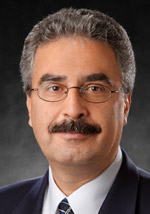
ARMIN ANSARI is the Radiological Assessment Team Lead at the Centers for Disease Control and Prevention (CDC) serving as subject matter expert in CDC’s radiation emergency preparedness and response activities. He received his BS and PhD degrees in radiation biophysics from the University of Kansas, starting his career as a radiation biologist, and did his postdoctoral research in radiation-induced mutagenesis at Oak Ridge and Los Alamos National Laboratories. He was a senior scientist with the radiological consulting firm of Auxier & Associates before joining CDC in 2002. He has led the development of key national guidance documents including guides for population monitoring and operation of public shelters after radiation emergencies and a number of training products for public health professionals. He is a past president of the Health Physics Society, adjunct associate professor of nuclear and radiological engineering at Georgia Institute of Technology, member of Georgia East Metro Medical Reserve Corps and Gwinnett County Community Emergency Response Team, and provides consultancy to the International Atomic Energy Agency. Since 2014, he has served as member of the U.S. delegation to the United Nations Scientific Committee on the Effects of Atomic Radiation. He is the author of Radiation Threats and Your Safety: A Guide to Preparation and Response for Professionals and Community, a book specifically directed at audiences without radiation protection expertise. |
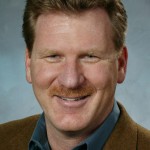
BROOKE R. BUDDEMEIER is an associate program leader in the Global Security Directorate of Lawrence Livermore National Laboratory (LLNL). He supports the Risk and Consequence Management Division in their efforts to evaluate the potential risk and consequence of radiological and nuclear terrorism. Mr. Buddemeier is a member of NCRP and served on the scientific committees which developed Commentary No. 19 - Key Elements of Preparing Emergency Responders for Nuclear and Radiological Terrorism (2005) and NCRP Report No. 165 – Responding to a Radiological or Nuclear Terrorism Incident: A Guide for Decision Makers (2010). From 2003 through 2007, he was on assignment with the Department of Homeland Security's as the weapons of mass destruction emergency response and consequence management program manager for Science and Technology's emergency preparedness and response portfolio. He supported Federal Emergency Management Agency and the Homeland Security Operations Center as a radiological emergency response subject matter expert. He also facilitated the department's research, development, test and evaluation process to improve emergency response through better capabilities, protocols and standards. Prior to that, he was part of the LLNL Nuclear Counterterrorism Program and coordinated LLNL's involvement in the National Nuclear Security Administration's Radiological Assistance Program (RAP) for California, Nevada and Hawaii. RAP is a national emergency response resource that assists federal, state and local authorities in the event of a radiological incident. As part of RAP's outreach efforts, Mr. Buddemeier has provided radiological responder training and instrumentation workshops to police, firefighters, and members of other agencies throughout the nation and abroad. He has also provided operational health physics support for various radiochemistry, plutonium handling, accelerator and dosimetry operations. He is Certified Health Physicist who received his Master's in Radiological Health Physics from San Jose State University and a BS in Nuclear Engineering from the University of California, Santa Barbara. |

WILLIAM E. IRWIN leads the Radiological and Toxicological Sciences Program at the Vermont Department of Health and is responsible for radiation protection in medicine and other applications, nuclear facility environmental surveillance, preventive radiological/nuclear detection and emergency preparedness. He is a member of NCRP Council Committee 1 which produced Report No. 180, Management of Exposure to Ionizing Radiation: Radiation Protection Guidance for the United States (2018); Program Area Committee 3, Scientific Committee (SC) 3-1 which wrote Report No. 179, Guidance for Emergency Response Dosimetry; and SC 3-1P2 which wrote Commentary No. 27, Implications of Recent Epidemiologic Studies for the Linear-Nonthreshold Model and Radiation Protection, for implementation of Report No. 179. He was on the 2017 NCRP Annual Meeting Program Committee and presented on the gaps filled in emergency response by the Radiological Operations Support Specialist (ROSS). He helped lead the NCRP Special Session on Radioactive Waste Management at the 2018 Health Physics Society (HPS) Mid-Year Meeting and serves on the 2019 NCRP Annual Meeting Program Committee. Dr. Irwin represents the Conference of Radiation Control Program Directors (CRCPD) on the ROSS Steering Committee leading efforts to train and certify hundreds of ROSS to bolster national radiological and nuclear preparedness. He is a ROSS instructor for Counter Terrorism Operations Support and reinforces his responder capabilities as a Chief Officer of the Vermont Hazardous Materials Response Team, and as a Chief Officer and Emergency Medical Technician for the Bakersfield Volunteer Fire Department. He is a Certified Health Physicist, long-time member of HPS and was previously on the American Board of Health Physics Part II Panel of Examiners. He serves the CRCPD in numerous committees, was on its Board of Directors and served as the Board Chair. Prior to government service, Dr. Irwin worked as Laser Safety Officer and Radiation Safety Officer at Harvard University and the Massachusetts Institute of Technology. He is a consultant on radiofrequency radiation (RFR), laser radiation, extremely low frequency electromagnetic fields, nuclear magnetic resonance fields, and ionizing radiations. He volunteers for Interpol in its international efforts to prevent and detect the smuggling of radiological and nuclear materials. Both his Doctor of Science and Master of Science were earned at the University of Massachusetts Lowell with his dissertation on the health effects of wireless telecommunications RFR exposure. Dr. Irwin started in nuclear power, first as a radiation protection technician on U.S. Navy submarines, guided missile cruisers, and aircraft carriers at Newport News Shipbuilding and Dry Dock Company and then as an instructor and supervisor in radiation protection, chemistry, and nuclear power plant systems and operations training at commercial facilities. |
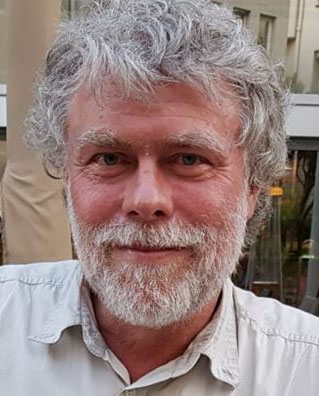
Michael Iwatschenko-Borho
|
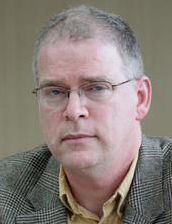
P. Andrew Karam
is a nationally and internationally respected radiation safety professional with over 35 y of experience in his field. He began his career in the U.S. Navy's nuclear power program, assigned as a radiation safety specialist on a nuclear attack submarine. Upon leaving the Navy he continued his career, taking positions in academia, state government, and as a consultant in private practice before taking his current position with Mirion Technologies. Dr. Karam has earned degrees in Geology (BA and MS) and Environmental Science (PhD) and is board-certified in health physics by the American Board of Health Physics. He has authored 17 books, six book chapters, and over 30 refereed papers in addition to hundreds of editorials, essays, magazine and encyclopedia articles, and blog postings on various aspects of radiation and nuclear safety. He also presents papers, invited lectures, and posters at meetings throughout the United States and internationally. Dr. Karam also tries to remain active in his profession outside of work. To that end, he has served on two committees of NCRP, a committee of the U.S. National Academy of Sciences, and serves as Web Manager for the International Radiation Protection Association. He has made a number of international trips on behalf of the International Atomic Energy Agency and the Health Physics Society, including to Cambodia, Cyprus and Paraguay. Most recently he travelled to Japan shortly after the tsunami and reactor accident, providing training to emergency and medical responders caring for patients from radiological areas. Andrew's current focus is on issues related to radiological and nuclear weapon interdiction and response to terrorist attacks. To that end, he works extensively with emergency responders at all levels of government as well as with companies to develop instruments, procedures, and operational concepts, and more. |
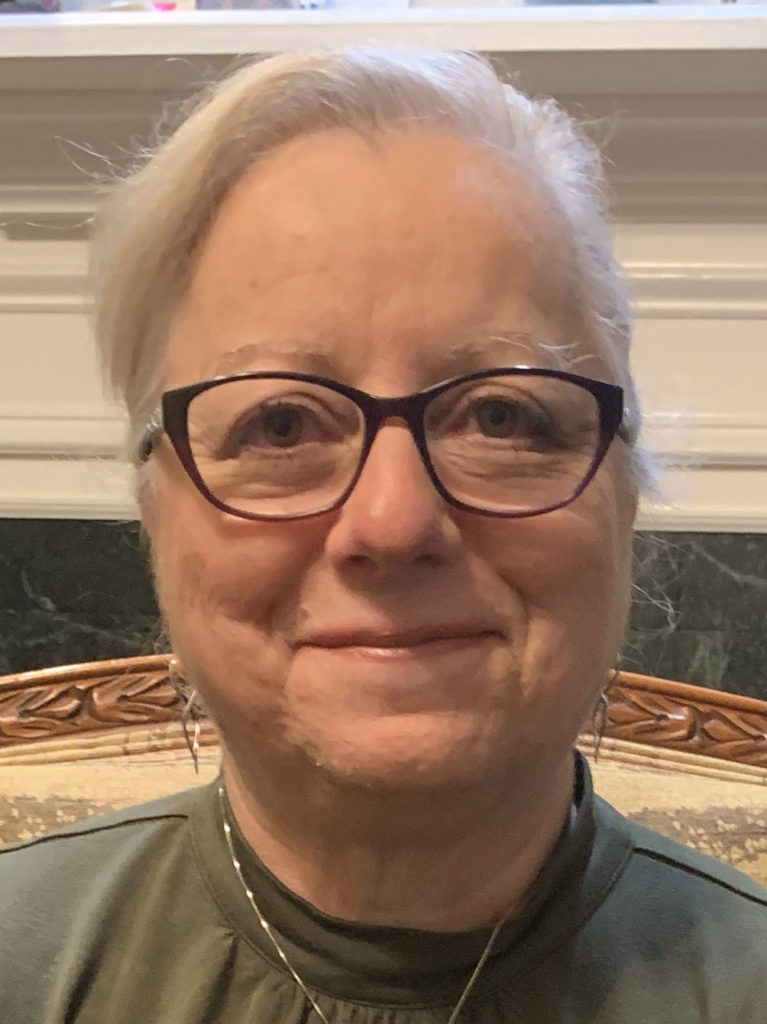
ADELA SALAME-ALFIE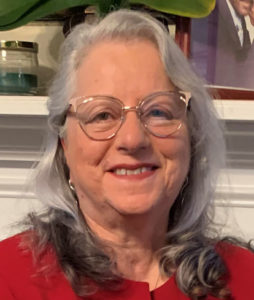
is a Senior Health Physicist in the Radiation Studies Section in the Centers for Disease Control and Prevention. Prior to this appointment, Dr. Salame-Alfie spent 22 y with the New York State Department of Health in various capacities including Director of the Division of Environmental Health Investigation, Director of Preparedness for the Center for Environmental Health, and Director of the Bureau of Environmental Radiation Protection. Dr. Salame-Alfie is a member of NCRP, and co-chaired Scientific Committees (SC) 3-1 and 3-2 that prepared NCRP Report No. 179 and Commentary No. 28 addressing dosimetry guidance for radiation emergency workers; and SC 3-3 that prepared Statement No. 15 on respiratory protection guidance for workers and volunteers. She is a Lifetime member of the Conference of Radiation Control Program Directors where she served as Chair and member of the Board of Directors and chaired several committees and received the 2014 Gerald S. Parker Award. She is a Fellow member of the Health Physics Society and currently serves on the Board of Directors. She has extensive experience in many areas of radiation protection including radiological emergency preparedness and response, environmental radiation and radon and has published and co-authored many publications. Dr. Salame-Alfie obtained her MS and PhD in Nuclear Engineering from Rensselaer Polytechnic Institute in Troy, New York. |
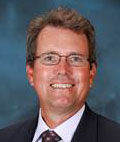 Jeff Chapman, Technical Advisor Jeff Chapman, Technical Advisor |
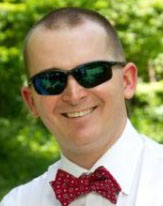
Daryl Fahner
|
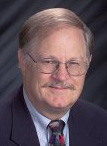
Richard T. Kouzes is a Laboratory Fellow at the U.S. Department of Energy's Pacific Northwest National Laboratory (PNNL) working in the areas of neutrino science, neutron and gamma-ray detection, homeland security, and nonproliferation. His work on homeland security has been for the development and deployment of radioactive material interdiction equipment at U.S. borders, and for 3 y he was the Principal Investigator and Technical Lead for the U.S. Customs and Border Protection's Radiation Portal Monitor Project, the largest single project at PNNL. His Safeguards projects deal with neutron detection coincidence counters for material assay. He is a Fellow of the Institute of Electrical and Electronics Engineers, and a Fellow of the American Association for the Advancement of Science. He is an adjunct Professor of Physics at Washington State University. Dr. Kouzes earned his PhD in physics from Princeton University in 1974. He is an author of over 150 peer reviewed papers and over 400 formal reports and conference proceedings. |
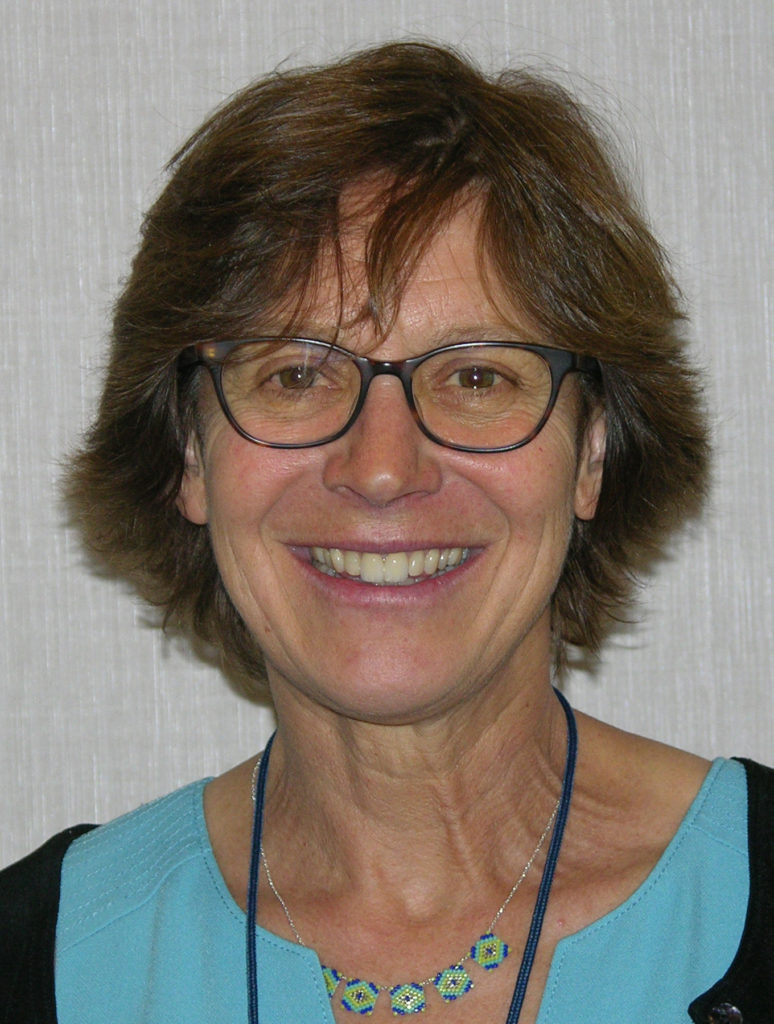
HELEN A. GROGAN
is President of Cascade Scientific, Inc., an environmental consulting firm. Dr. Grogan received her PhD from Imperial College of Science and Technology at the University of London in 1984 and has more than 25 y of experience in radioecology, environmental dose reconstruction, and the assessment of radioactive and nonradioactive hazardous wastes. She first worked at the Paul Scherrer Institute in Switzerland on the performance assessment of radioactive waste disposal for the Swiss National Cooperative for the Disposal of Radioactive Waste (Nagra). Dr. Grogan was actively involved in the early international cooperative efforts to test models designed to quantify the transfer and accumulation of radionuclides and other trace substances in the environment. Validation of computer models developed to predict the fate and transport of radionuclides in the environment remains a key interest of hers. In 1989 Dr. Grogan returned to the United Kingdom as a senior consultant to Intera Information Technologies before moving to the United States a few years later, where she has worked closely with Risk Assessment Corporation managing the technical aspects of a wide variety of projects that tend to focus on public health risk from environmental exposure to chemicals and radionuclides. Dr. Grogan has served on committees for the National Academy of Sciences, the International Atomic Energy Agency, the U.S. Environment Protection Agency, and NCRP. She co-edited the text book Radiological Risk Assessment and Environmental Analysis published by Oxford University Press in July 2008, and authored the chapter on Model Validation. |


 has a PhD in Physics from the University of Tennessee, Knoxville. She works at the National Institute of Standards and Technology (NIST). She has served as a research scientist for low-level radioactivity measurements using laser ionization mass spectrometry. She performs gamma-ray spectrometry measurements to develop standard reference materials as well as calibration of radioactive sources for source manufacturers, radiopharmaceutical companies, and nuclear power plants. Since 2002 her work involves testing of commercially available radiation detection instruments and development of national and internal standard for radiation instrumentation used for detection of illicit trafficking of radioactive materials and homeland security applications. She is an NCRP member since 2018, the American National Standards Institute N42 Committee chair, and the convener of the International Electrotechnical Commission TC45 WG9 and SC45B WGB15. She is the author of over 70 peer reviewed papers and over 110 reports, standards, and conference proceedings.
has a PhD in Physics from the University of Tennessee, Knoxville. She works at the National Institute of Standards and Technology (NIST). She has served as a research scientist for low-level radioactivity measurements using laser ionization mass spectrometry. She performs gamma-ray spectrometry measurements to develop standard reference materials as well as calibration of radioactive sources for source manufacturers, radiopharmaceutical companies, and nuclear power plants. Since 2002 her work involves testing of commercially available radiation detection instruments and development of national and internal standard for radiation instrumentation used for detection of illicit trafficking of radioactive materials and homeland security applications. She is an NCRP member since 2018, the American National Standards Institute N42 Committee chair, and the convener of the International Electrotechnical Commission TC45 WG9 and SC45B WGB15. She is the author of over 70 peer reviewed papers and over 110 reports, standards, and conference proceedings. News & Events
News & Events